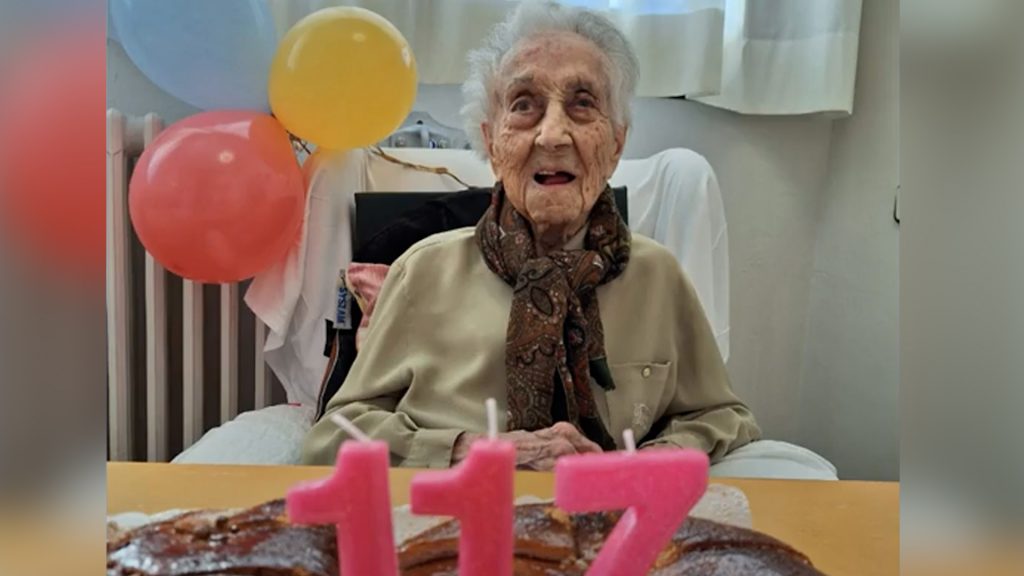World’s oldest woman’s DNA and diet may explain her 117 years

Wondering what it takes to live to 117? Ask María Branyas Morera and she would have said “order, tranquility, good connection with family and friends, contact with nature, emotional stability, no worries, no regrets, lots of positivity and staying away from toxic people.”
But before her passing on Aug. 19, 2024, researchers studied Morera’s genetic samples to uncover the scientific reason behind her long life. The results, published in Cell Reports Medicine, provide new clues.
Morera’s secret
Born in San Francisco on March 4, 1907, Morera moved to Spain at the age of 8.
“I think longevity is also about being lucky. Luck and good genetics,” she once told Guinness World Records, which confirmed her as the eighth-oldest person in history with a verifiable age.
The study found that she had very short telomeres, normally linked to aging and disease. Yet she remained cancer-free and healthy. In her case, short telomeres acted as a “chromosomal clock for aging rather than a predictor of age-linked diseases such as neurodegeneration or diabetes.”
Researchers also discovered that Morera carried several rare gene variants that acted like biological shields. Unlike common variants associated with modest benefits, these were extremely uncommon, setting her apart from other long-lived Europeans.
Some variants were linked to immune regulation, giving her body extra tools to protect against infection and clear precancerous cells.
Lead researcher Dr. Manel Esteller told Fox News Digital, “Branyas [Morera] had an exceptional genome enriched in variants in genes that are associated with enhanced lifespan in other species (such as dogs, worms and flies) and in genes that provide cardiolipidic protection and retention of cognition.”

Yogurt and her gut microbiome
The study also examined Morera’s gut bacteria. Despite her advanced age, her microbiome looked decades younger — likely due to her daily love of yogurt.
“Our healthy supercentenarian ingested around three yogurts every day containing Streptococcus thermophilus and Lactobacillus delbrueckii subsp. bulgaricus, known to favor the growth of the described bacteria in the gut,” the study reads.
She also had high levels of Bifidobacterium, a bacterial strain associated with reduced inflammation and better metabolic health. A healthy microbiome trains the immune system to fight off sickness causing microorganisms.
The Washington Post noted that Morera was the oldest person in Spain to survive COVID-19, a sign of her resilient immunity.
Inflammation and health
Cleveland Clinic lists the following as signs of chronic inflammation in the body:
- Persistent fatigue or low energy.
- Body aches or joint stiffness.
- Gastrointestinal issues such as diarrhea, constipation or acid reflux.
- Weight gain or loss.
- Skin changes such as rash or sores.
- Belly pain.
- Frequent infections.
Some experts also point to brain fog, swelling, puffiness or low-grade fevers as indicators.
Inflammation itself isn’t bad — it’s the body’s natural defense response to injury or infection. However, when inflammation becomes chronic, the constant immune activation damages organs and tissues over time.
Researchers believe Morera’s low inflammation levels played a major role in her long, healthy life.
Heart health and blood markers
Morera also carried protective gene changes that influenced cholesterol and lipid processing. Her genetic wiring worked in tandem with her unusually high HDL (known as “good cholesterol”) and very low triglycerides. People with higher HDL levels generally face lower risk of heart attack and stroke.
Not everything was perfect. Morera was hard of hearing and experienced mobility issues. Her blood showed signs of clonal hematopoiesis of indeterminate potential (CHIP), a condition in which a group of blood cells originates from a single mutated stem cell. In most people, CHIP is associated with higher risks of blood cancer and cardiovascular disease.
She also had an expansion of age-associated B cells, typically linked to immune aging. Yet despite these markers, she never developed related illnesses.
Another surprise: the protein most elevated in Morera compared with younger postmenopausal women was serum amyloid A-1. While this protein is often linked to Alzheimer’s disease, she showed no signs of dementia at her death.
A Mediterranean pattern
To better understand her lifestyle, scientists recreated a three-week meal plan based on Morera’s diet. It featured vegetables, lentils, fish, olive oil and — without fail — yogurt three times a day.
For breakfast, she typically had a milk smoothie with cereals and protein.
This simple, balanced pattern reflects the Mediterranean diet, long praised for supporting heart health and longevity.
At the time of her passing, Morera was survived by two children, 11 grandchildren and many more great-grandchildren.

The post World’s oldest woman’s DNA and diet may explain her 117 years appeared first on Straight Arrow News.





